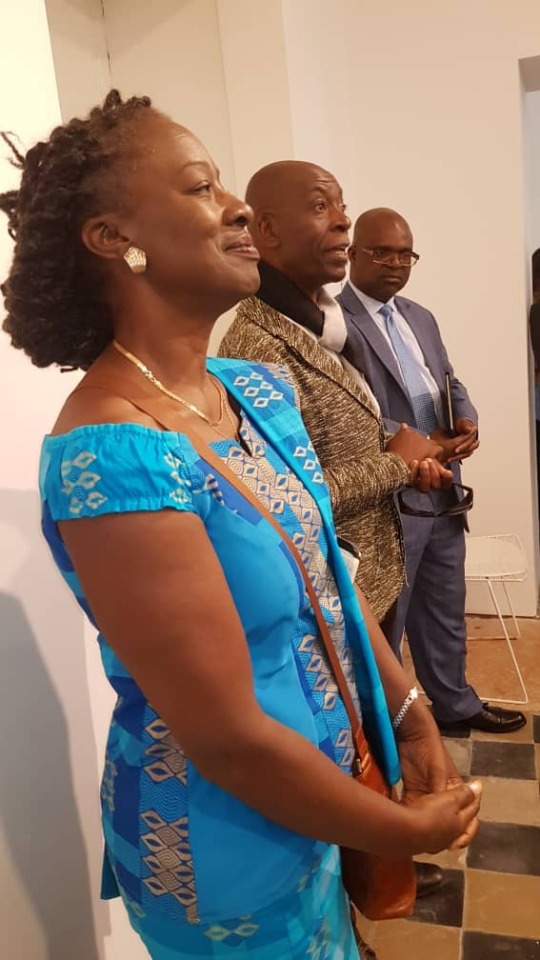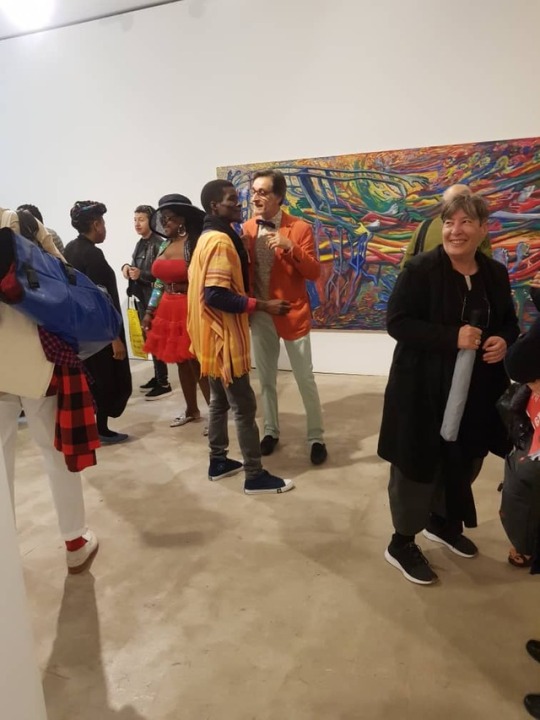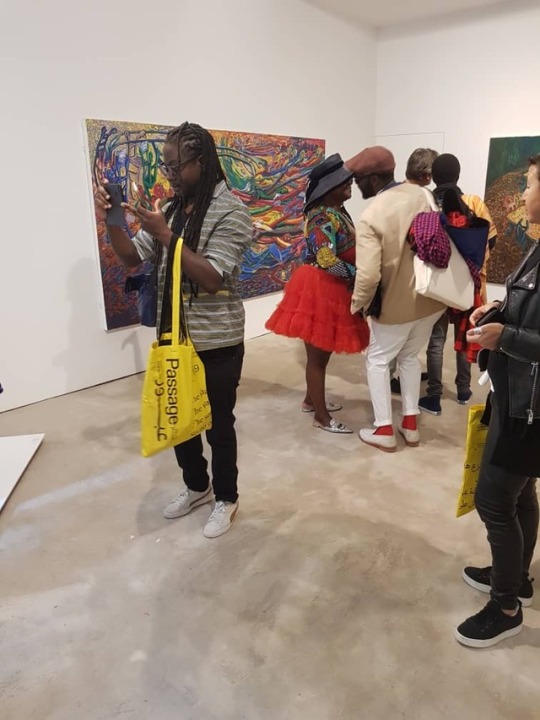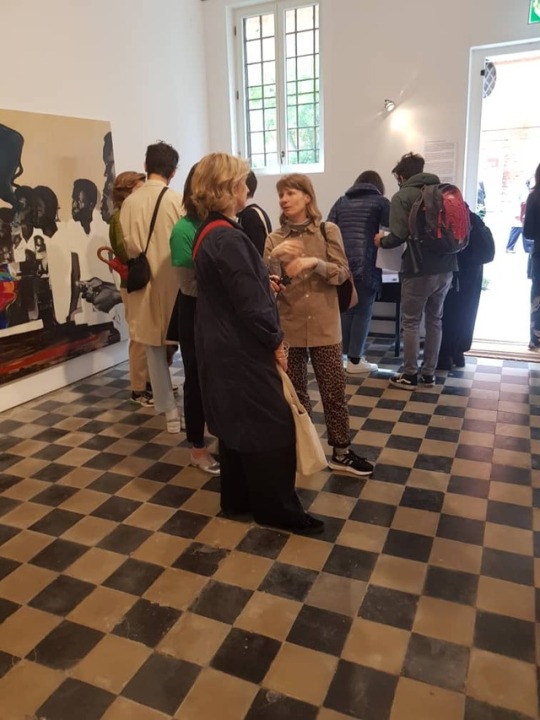Photo

The Pavilion of Zimbabwe will open today with a vernissage slated for 10:00hrs. We will keep you up to date with the proceedings from hereon!
2 notes
·
View notes
Link
0 notes
Video
youtube
Curator Talk | Geographies of the Imagination | Exhibition Making and Re...
0 notes
Video
youtube
Museum Talk | Institutional Practice Is Creative Work: A Roundtable on L...
0 notes
Photo

#SokoRisinaMusoro opens May the 11th at the International Art Exhibition- La Biennale di Venezia (via Zimbabwe 2019 | My Art Guides)
0 notes
Video
youtube
(via YouTube) Our Press Conference for the 58th Venice Biennale just wrapped up!
1 note
·
View note
Text
58th Venice Biennale Curatorial Theme Announced
With the announcement of the 58th International Biannual of Art out in the open, Director of the Hayward Gallery at Southbank Centre, in London, United Kingdom; Ralph Rugoff has excited the Art World to respond to the theme as individuals, Galleries, collectives and National Pavilions. With an increase in African Pavilions over the past four Editions, which saw Angola clench the coveted Golden Bear Award for best Pavilion, Rugoff’s proposition May You Live in Interesting Times incites positive thoughts concerning not only the Art World, but Global Affairs as a whole.
Following super curator Okwui Enwezor in the organization of the world’s most premier Art Fair, the consecutive to last year’s All the World’s Futures will expose a wide array of perspectives that grasp on the contemporaneity around socio- cultural issues ranging from fake news; the over-immersion of the second life and abandonment of the “offline” or “IRL” consciousness. The conceptualization of alternative truths, false truths and alternate realities would slip into the seams of this counterfeit experience of life which Rugoff has postulated, the result being the creation of a vast reflection of works of art in every form that interprets this upsurge in the manipulation of a subjective value, that is, fact.
May You Live in Interesting Times is purportedly derived from an old Chinese curse. Quoted by many Western politicians, the most popular being Austen Chamberlain, represents a socio- cultural intrusion into the political sphere. Rugoff emphasizes that there is the matter of disembarking the subjectivity of art by grasping upon forms of absorption, learning and involvement, albeit the current surge of social justice pursuit which bidding, has broken the power of art into the same politics plagued by truths and untruths.
At this platform, art will thus be engaged at a level where Hegel’s notion of “this”, in his Phenomenology of Mind, points out that there is conflict between reality and consciousness; truth being reality there is the aspect wherein the unreflective conscience acknowledges to observation through five senses to deduce truth or reality. It is on this notion of self-assessment, that the 58th Edition of the Venice Biennale is geared to explore a wider area of art, appealing to all senses, including the common, that is, the truth.
All things being equal, the realities of the world will be placed on a scale where the West, the East and the South equally express their realities on a level footing, with millions of visitors set to view the Biennale, the interesting times we operate in are bound to be captioned through insightful art.
0 notes
Photo

Mistakes in the Right Lines
The composition is largely linear, paying much detail to the positive space fixed largely at the center of the events. Forms have a painterly aspect of the artwork is direction based; upside down poultry heads shift leftward while a darker bird stands in front of this background, the multiple aspects building up a united assemblage conclusively.
The presence of feet in the work make the exploits within this largely minimal; with regards to the chromatic scale, of the work lightly speckled with innuendo. The lacelike hems toward center are brightened with the essential motif therein being of the retso derivative; associated with Zimbabwean faith and is dogmatic to a degree, perhaps in conclusion, represents the consecration of the carnal.
0 notes
Photo

ziminvenice
Urban Totems
A portrait of a man; immersed in the commercialism of the contemporary age wherein what the individual perceives the attainment of items makes the most out of life. Urban Totems peers directly at the viewer and what emerges in the multiple coloured glasses of the model is branding; diverse corporate insignia which say something about the current cosmologies in Zimbabwean culture; people buying something to become someone as opposed to being someone with a choice whether or not anything to be consumed makes them what they really are.
The idea of being becomes speckled with monosodium glutamate; an addiction and an additive which drives the individual’s need to identify with the metaphorical “them” and feel that once they don the corporate covered shades they become a part of an “us. A steady consumption of what is not needed and a submission of power to what is not an indigenous culture through sacrifice at the altar of commonplace.
The totemic system finds itself at the very core of Zimbabwean identity; often viewed as somewhat passé by some part of society, which entails that there is the notion of an ever evolving society which lies at the basis of everyday life. Arguably what tends to replace custom is often cosmetic; subjective and lacking any strong foundation therein, the model bearing new ways of seeing that are “progressive” in name, however destructive in the captioning of history.
Urban Totems is thus a critique of the contemporary African way of life as the identities of the 21st Century have largely been focused on the Second Life; shadowed by the stark irony that the First Life itself is now but an ember losing its warmth and glow to what is trapped between four walls, opinions quashing opinions and narratives overpowering nature. There is hope for the erasure of the new totems; the individual may one day take note of the destruction implicitly caused by the machine and the media- withdraw from their cave and find the need to embrace their old, simple first life once again.
0 notes
Photo

Ihohoho ya Madzibaba Ishmairi
The wrath of Ishmael’s staff
The congregation is hewn from line and upon greater observation of the furrowing, open form rises with the central figure, the head of the congregation, raising his staff towards the group of dark heads who form the middle ground of the composition. The touches of colour represent the sky, and other outlines of silhouettes characterize the form therein.
What of the raised staff of Madzibaba Ishmairi? The issue of resistance; calls for altercations from a wilderness based invisible pulpit and the staff drowning out the might of the baton present a shift in resistance, often politically sourced, being flung upon the cloth. The resultant hohoho was in its part a realization for the masses that the barks that arose from the body politic of that day, where not backed by a powerful bite.
0 notes
Photo

Chimanjemanje
The effect of high strung commerce on the African identity is prevalent in the print. A patchwork of beverage brands forms the core of the interwoven blocks of rich colour with hints of corporate identity inscribed upon them. The negative space features black heads; in that negative space which can serve as a metaphor to the classic Garvey-esque statement entailing to the removal of the kink in the mind, a diverse feature of elaborate hair styling appears which subscribe to some form of comfort with identity.
The top part of the composition is a furrow of line in red and black. The eye is drawn right to a yellow barcode strip that somewhat ascribes the product identity; perhaps one may postulate that Contemporary African identity is a product with unique features that are identifiable by consumer trends, a part of a gross market research that is driven by wants that are alien to the natural lifestyle or consumptive traits of the Continent, which are all in all detrimental in the long run scheme of things, that is, the physiological erasure of the African body.
The linear arrangement of the three quarter mass portrait is a punch card of black, green, yellow and red; the ites of African identity in heraldic terms, where atop the furrow is the black white and red banner of the north. This is a form of cartography placing the map of Africa in its consumptive trends. The print facet being in blocks of grouped opinions and preference; the organic thought being absent overall.
The multiple facets create a carpeted grouping in the end. The titular chimanjemanje points out to a generation; millennial by its tag, which is shifting towards cosmopolitan tastes and deeply at a loss considering tradition, culture and values. The clarity of the devices in the lower part of the composition are in fine feather. The apical linear barrage has the illusion of an alpine landscape; a natural guide for the eye to naturally roll upward through the body, the two forms framing the artwork as a self-constructive piece with regards to the explanatory value which it conveys.
The Afrocentric theme of Chimanjemanje is key as we observe a month that is focused on Africa’s history and development. It summarily deals in the need to reengage what it means to be African in an ever blending agora that stimulates exchange, an exchange which may at its core, hold the eraser to what may all have been African, perhaps to the construction of a future which no one knows in the present.
0 notes
Photo

Theater Absurd, Mixed Media. 2011.
The show unravels as helmets are placed in opposition to sets of sandals. The work is in itself explanatory of the status quo at the time of its execution. Logic, ellipsis and context at the time of the execution of this artwork were majorly influenced by by instinct; a stripping away of humanity that in the viewers eyes, shifted slowly towards the final overthrow.
1 note
·
View note
Photo

Ze- 3. Derry Bickle. Video, 2010
The photomontage creates a painterly stratum that creates the illusion of two planes of existence through a sort of dream sequence wherein the negative space of the richly pastured creates the illuminated plane’s surreal form.
The figure finds itself receding into the vert surroundings as the texture of the model’s garment creates a flatness in the disruptive element that accompany the composition; the red fabric that is off center creating a contrast with the overall green tone of the image.
The clash of clarity establishes conflict which unites conclusively to present a lapse in time and space.
0 notes
Photo
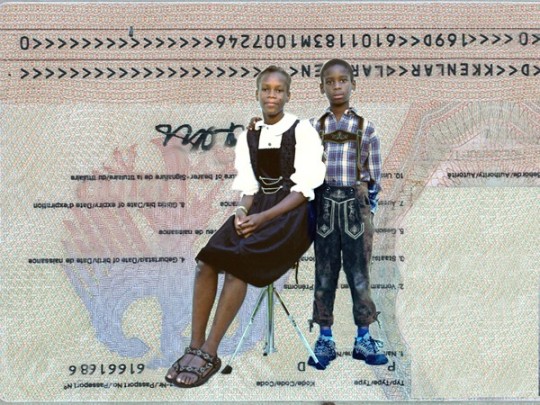
Passport
The global migrant crisis has been a topic of discussion for a protracted period of time; the incarnations of that migration takes various forms and systems, Dondo gives an interpretation of the evolutionary precepts migration has through print in the framework of a passport page superimposed by two African children adorned in traditional German garb. This is the legal form of migration. Adoption, as observed from Dondo’s lens, represents a Cultural integration shift that constitutes the erasure of identity.
The subject matter is clear and self-explanatory at best. The borders of photorealism and chirographic establish a contrast between the highly formal and abstract elements that generate an aspect of the identity question in light of the figurative representations. Two black African children with the background, or representative history of the upside-down Bundesadler uphold this erasure of history, culture and known being.
This uncomfortable duplicity develops the easy unity that Passport embodies. It is within agnomen and linguistic energies that are in the background. There is an element of tongue in cheek analysis that strikes the subject matter with the divergent objectivity of the viewer being put to the test. This writing is just one of infinite objectives; way different from what the artist sought out to comment, however the migratory theme of the artwork uses the visual cues applied to overall set agendas which, seven years down the line, are the core topic for discourse on outsiders in German society.
The conclusive landscape format of the composition is concise in framework and in its conveyance of context and content. The tension of the objects is sharp jabbing and presents information that generates thought from the viewer. The juxtaposition of the two dimensional with the three dimensional representation is engaging. The painterly and linear adept is incisive. Passport is commentary of a socio-economic trend summary that is captivating beyond measure.
0 notes
Photo
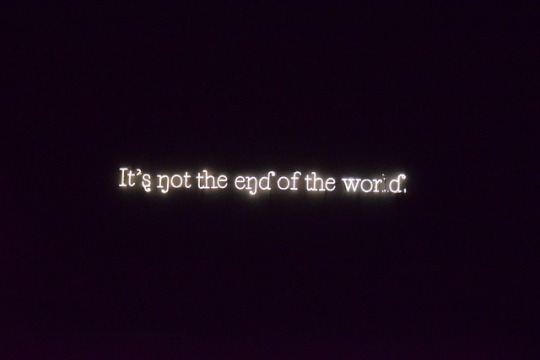
As one views Whabira’s installation, the prefix of the word “black” takes the center stage as the post-colonial discussion is engaged. The titular ambiguity of the artwork, acquired from the Dambudzo Marechera novel of the same name; is heavily laden with tones of melancholy and despondency, which in the years after Independence was embroidered into Zimbabwean identity through eventual chagrin on the back of revolutionary expectations being unearthed. The paradox of the light from a black sun is the metaphor of dejection, a contradictory treatise to the overwhelming chaos that writer operated within and became driven down by; all spurring a creative saltation that endowed novel ways of seeing, thinking and reprimanding the post-colonial African cosmos.
The connotations of Whabira’s composition play upon intertextuality and visual language breakdowns to such an extent where text and cipher present a paradox statement that is as stygian as it is convivial; the world being lightly stegonographic as the black ‘1’ stands out as the representation of the ecliptic remote while all the typefaces in the white light are calligraphically flourished, illuminated to pronounce the omnipresent hope that exists everywhere but the assimilado who has lost their identity.
In that deepest despondency is the lone one who navigates existence in a means to reach an end that is uncertain; Doke’s phonetic characters which represented syntax in African dialect, developed through Western thought, eroded by modernity to such a point where no phraseology was developed in local thought to replace them.
0 notes
